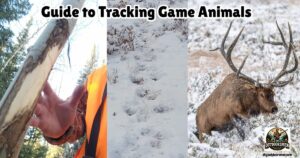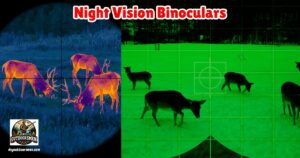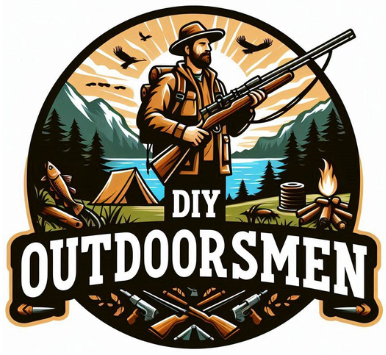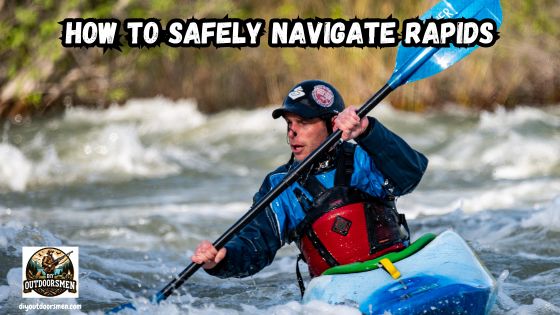Contents
- 1 Understanding River Features
- 2 Essential Kayak Skills
- 3 Quick Guide to Safely Navigating Rapids
- 4 Additional Considerations and Safety Tips
- 5 Advanced Tips and Techniques for Navigating Rapids
- 6 Frequently Asked Questions on Navigating Rapids
- 7 Incorporating Safety and Skill for a Rewarding Experience
- 8 Wrapping up on Navigating Rapids
I have always found that kayaking through rapids is an experience that challenges both the mind and the body. Over the years of paddling, I have come to understand that knowing the river’s features and practicing essential skills can make the difference between a smooth ride and a dangerous situation. This guide outlines my approach to helping fellow kayaking enthusiasts get ready for rapid runs safely and confidently.
- Gear Check: Before every trip, I inspect my personal flotation device (PFD), helmet, and other essential gear. Reliable equipment is very important in ensuring personal safety when conditions are rough.
- Scout the Rapids: I take a moment to observe the rapid from a safe distance, which helps me spot the downstream V, avoid dangerous upstream V formations, and identify the location of eddies. This initial overview is vital for planning my route.
- Plan Your Route: With knowledge of the river’s features, I chart a short mental map of the safest path. This often means sticking to the main current and steering clear of chaotic areas. Knowing key landmarks and obstacles in advance prepares me for changes in flow.
- Coordinate with Fellow Paddlers: Communication with any companions on the water is key. I always agree on signals and instructions before the run so everyone is in sync, thereby improving collective safety and understanding of the river’s behavior.
- Focus on Technique: Throughout the run, I concentrate on using deliberate strokes and maintaining a firm hold on my paddle. Even when conditions seem to shift suddenly, sticking to practiced techniques helps me keep calm and in control.
Understanding River Features
Rivers are ever-changing, and the water naturally creates features that directly impact how a rapid should be approached. Paying close attention to these characteristics improves safety and builds confidence when on the water. Below are some of the common river features every kayaker should recognize:
Downstream V (Tongue): Many rapids display a pattern where water forms an upside-down V. This shape usually marks the strongest, most direct flow of water. I keep to the downstream V to maintain control because it often provides the clearest and safest path through turbulent sections.
Upstream V: When water splays around a rock or obstruction, forming an upstream V, it usually signals potential hazards. The water in this pattern can produce unpredictable currents and may push you toward obstacles. I consciously avoid these zones since they introduce unnecessary risks in a rapid.
Eddies: Eddies are pockets of calmer water found downstream from obstacles like large rocks or bends in the river. They can serve as natural resting spots where a quick break is possible. However, caution is needed when leaving an eddy and re-entering the main current because the force and direction of the moving water can change abruptly.
Eddy Line: The boundary where the fast-moving water meets calmer eddies is known as the eddy line. This zone is challenging because forces from both the main current and the eddy pull in different directions. I focus on entering and exiting the eddy away from this boundary to maintain a clear sense of the water’s movement.
Horizon Line: Especially in more challenging rapids, the horizon line can hint at the presence of a drop or a ledge. Riding along the horizon line gives me a preview of what’s ahead, so I can adjust my route before encountering any sudden change. This visual cue allows for on-the-fly planning and minimizes surprises.
Essential Kayak Skills
The foundation for safely navigating rapids lies in mastering a set of core kayaking skills. Consistent practice has helped me overcome challenges in unpredictable water. Here are several techniques that every kayaker should work on:
- Paddling Techniques: It is important to master forward paddling, back paddling, and turning strokes. Knowing how to adjust speed and direction using a variety of strokes is vital, especially when water conditions change rapidly.
- Rolling: The roll is a technique that allows a paddler to recover a flipped kayak quickly. I practice rolling in controlled environments like calm pools until the move becomes almost instinctive. This skill has been crucial during unexpected capsizes in rapid water.
- Bracing: Using the paddle as a tool for stability helps keep the kayak on course when sudden currents strike. Through regular practice, I have learned to quickly use bracing techniques to prevent dangerous shifts off course.
- River Reading: A critical skill involves quickly assessing the flow of the river, spotting hidden hazards such as shifting currents or unseen obstacles. Training the eyes to pick up subtle clues in the water is a skill that sharpens with experience.
Starting in less challenging water and gradually progressing to tougher rapids has allowed me to build these skills safely. Practice in controlled settings reinforces good habits and increases confidence when facing more difficult conditions.
Over time, I have refined a straightforward checklist that guides me through rapid runs. Keeping each step clear in my mind has been key in fostering both safety and control:
- Gear Check: Before every trip, I inspect my personal flotation device (PFD), helmet, and other essential gear. Reliable equipment is very important in ensuring personal safety when conditions are rough.
- Scout the Rapids: I take a moment to observe the rapid from a safe distance, which helps me spot the downstream V, avoid dangerous upstream V formations, and identify the location of eddies. This initial overview is vital for planning my route.
- Plan Your Route: With knowledge of the river’s features, I chart a short mental map of the safest path. This often means sticking to the main current and steering clear of chaotic areas. Knowing key landmarks and obstacles in advance prepares me for changes in flow.
- Coordinate with Fellow Paddlers: Communication with any companions on the water is key. I always agree on signals and instructions before the run so everyone is in sync, thereby improving collective safety and understanding of the river’s behavior.
- Focus on Technique: Throughout the run, I concentrate on using deliberate strokes and maintaining a firm hold on my paddle. Even when conditions seem to shift suddenly, sticking to practiced techniques helps me keep calm and in control.
This concise method of preparing for each rapid run has proven to improve my safety records. Every decision is made with the understanding that the river demands respect and undivided attention at all times.
Additional Considerations and Safety Tips
Beyond the fundamental skills outlined above, I have learned that a few additional precautions can further boost safety during rapid runs. These extra tips might seem basic yet have made a significant difference in preventing hazards:
- Wear Proper Safety Gear: I never compromise on protective items such as a life jacket and helmet. Waterproof clothing and a spray skirt are also important in keeping me safe and comfortable as I get soaked.
- Check Weather Conditions: I always review weather forecasts before heading out. Even slight changes—such as shifts in wind or a brief rain shower—can alter rapid conditions substantially. Spending a few minutes on weather analysis can pay huge dividends in safety.
- Keep a First Aid Kit Handy: Accidents can happen when you least expect them. Carrying a basic first aid kit along with emergency supplies has enabled me to act quickly if a minor injury occurs.
- Know Your Limits: Every rapid varies in difficulty level. I constantly assess whether my current skill set matches the water conditions. Learning from professionals through courses and gradually pushing my own limits has often kept me out of dangerous situations.
- Maintain a Calm Mindset: Keeping a clear head is essential. I have noticed that stress and anxiety can make even a moderate rapid feel treacherous. By practicing mindfulness techniques and staying focused, I react more quickly to unexpected challenges.
These extra safety measures are as important as the physical skills needed for kayaking. Following these simple guidelines has helped me avoid risks on numerous occasions and provided peace of mind when navigating challenging waters.
Once the basics feel secure, it’s natural to want to refine your techniques further. Advanced methods in kayaking come largely from experience combined with a willingness to adopt new approaches that build on established skills. Here are some tips I have found useful for finer control during long rapid runs:
Fine-tune Your Paddle Strokes: Every paddle stroke subtly affects the kayak’s trajectory. I work on syncing my stroke with the pace of the river to reduce splashes and keep the kayak on its intended course. Understanding the slight nuances between strokes helps me quickly adjust power and direction as needed.
Practice Quick Rolls in Controlled Environments: Although I might not use a roll in every rapid, regular practice in calm water has ingrained the move into my muscle memory. This preparation means that when a capsize happens unexpectedly, I can recover swiftly without panic.
Experiment with Bracing Techniques: The pressure of fast currents may sometimes require slight variations in the bracing method. For example, using a paddle flip or a low brace depending on the water’s force can help keep the kayak steady. These small adjustments are learned over time and are crucial during moments of high pressure.
Continuously Evaluate Water Movements: Advanced river reading means staying alert to continuous changes in the water. I keep an eye on both obvious indicators, like rocks and rapid drops, and subtler clues such as changes in water texture. Noticing these shifts early can provide additional time to adjust my strategy.
Regular reviews with fellow paddlers also help me identify what techniques worked well and what may need additional practice. This collaborative approach has been instrumental in evolving my skill set over time.
I often get questions about safely navigating rapids, and I have found that clear, straightforward answers help clarify many concerns. Here are some common questions and my responses:
How do I identify the safest path through a rapid?
I start by scouting the rapid from a safe distance, looking for the downstream V that typically marks the main flow. By noting fewer obstructions and more consistent water movement, I can pick a path that minimizes surprises.
What should I do if I lose control during a rapid?
Wearing proper gear always helps. My helmet and PFD ensure that even if I momentarily lose control, the risk of injury is reduced. I rely on practiced rolling and bracing techniques to recover safely and calmly.
What additional resources can help a beginner learn these techniques?
I recommend signing up for a whitewater kayaking course led by professionals. Watching instructional videos, practicing in safe environments, and reading reliable guides can help build a solid foundation before tackling tougher rapids.
How important is checking weather before heading out?
It is really important to check the weather. Even minor changes in wind or a sudden rain shower can alter rapid conditions unexpectedly. Spending time studying forecasts allows me to plan trips when conditions are most predictable.
Incorporating Safety and Skill for a Rewarding Experience
The thrill of paddling through rapids has given me countless memorable experiences. Each run serves as a lesson in safety, awareness, and constant growth. The mix of refined skills, careful decision-making, and respect for the river creates an adventure full of challenges and rewards.
Over the years, I have learned that every trip is not solely about the physical challenge; it is also an opportunity to sharpen my judgment and planning skills. Clear communication with fellow paddlers, regular training, and a commitment to safety have all played significant roles in making my time on the water both safe and exhilarating.
My approach to navigating rapids safely centers on a balanced mix of practical knowledge and regular practice. Recognizing key river features such as the downstream V, eddies, and the eddy line helps me plan my route, while consistent training in paddling, rolling, bracing, and river reading keeps me prepared for sudden changes.
Diligent gear maintenance and careful weather monitoring further reduce risks and allow me to enjoy the challenge with confidence. This guide reflects lessons learned from years of experience on the river. I encourage fellow kayaking enthusiasts to study these techniques, practice regularly in safe settings, and gradually build their skills before tackling more challenging waters.
Ultimately, every rapid run is a chance to learn more about the river and about oneself. With careful preparation and respect for the water, kayaking through rapids remains a thrilling and rewarding adventure.
Whether you are a beginner or looking to improve your technique, remember that every decision on the water matters. Plan your route, stay alert, and trust in your training. Safe paddling, and may your time on the river be as exciting as it is safe.
Most Recent Articles:
- Complete Guide On Tracking Game Animals

- DIY 4-Step Guide To Field Dressing And Quartering A Deer

- Night Vision Binoculars For Nocturnal Hunting

- The Science Behind Camouflage Patterns For Deer Hunting

- Binocular Accessories For Hunters

- 9 Tips for Using Trail Cameras To Track Deer Movements

As always, stay safe, enjoy the journey, and please try to leave it cleaner than you found it. If you have any comments, questions, ideas, or suggestions, please leave them in the comment section below, and I’ll get back to you ASAP. You can follow us on YouTube: Man Art Creations for videos of our DIY Adventures.
P.S. Thanks so much for checking out our blog; we really appreciate it. Just so you know, we may receive a commission if you click on some of the links that appear on our site. This helps us keep our content free and up-to-date for everyone. We appreciate your support!



